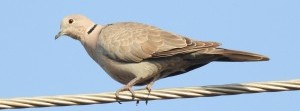
Photo Credit: Emily Bulmer
The Path of the Herbalist
Imagine dried herbs, ground-up roots and powdered barks carefully labelled and arranged in neat wooden boxes, dried berries wrapped in a deer skin pouch or willow bark being boiled in a cast iron pot over an open campfire.
Before pharmacies, prescriptions and pills were commonplace, people from all cultures relied on medicinal plants to treat their aches and pains. These remedies were often passed down informally from generation to generation or from an elder healer in a village to a younger person who showed promise. Even as modern medicine offers multitudes of neatly prepared creams and pills, the use of medicinal plants is making a comeback.
Jean Christian, a practising herbalist, has spent much of her life learning and living with the healing power of plants. She spent several years living off the grid, far from doctors’ offices and emergency rooms. During that time, she made remedies that would successfully calm and heal many common ailments, treating herself, friends and family with plants gathered from her property. After many years of practise and study, Christian is passionate about sharing her knowledge with others.
“I see it on two levels. It is very easy to teach people medical and herbal terminology and have people take notes, and it is also very easy to point at all the plants and say what the medicinal properties are and the conditions they can be used for,” Christian says. “What I would really like to add is the relationship of (plant medicine) to your life itself—seeing the earth as a source of medicine—both for your body and your being in all its ways.”
The path of plants
I signed up for Christian’s Path of the Herbalist workshop series to satisfy a longtime interest and curiosity in traditional plant medicine. In addition to learning how to make remedies, I see it as a way to better understand the forest and environment where I live.
I show up to my first class with plastic bags for collecting, a notebook, a sharp knife and leather workgloves. Before gathering any plants, we discuss the need for respect and awareness of the plant community’s condition and the impacts of harvesting. In some areas, plants like devil’s club have been over harvested to the point where the local population is wiped out. Taking only what is needed in a way that does not kill the plant is emphasized.
Christian describes what she calls the path of the herbalist as a deep learning journey: “Get to know the plants in a multi-level way—not just their properties, but how the plants affect you on all levels.” She explains, “If your skin eruption is a result of anxiety or fear or stress then the plants we are looking for are going to be relaxing, soothing and connecting us.
“Going into the field is different than getting a bag of dried herbs because now (you) are developing a relationship with the living entity itself and its home. That’s what the path of the herbalist means—not just going to the health-food store and buying a bottle of the herb, but getting to know the whole life context, the spirit of the plant and its environment.”
Christian challenges us to get to know a few plants, rather than become overwhelmed with memorizing dozens of plant properties and ailments. I feel my knees creak in the damp and think about my torn ligament. Or the strange eczema flare-up on my arm. I have no shortage of opportunity to put my new-found knowledge into action.
I settle on making an infused oil for pain and inflammation using arnica, highbush cranberry (also known as crampbark) and devil’s club, for their properties in treating inflammation, and willow, which reduces pain. It will take me four separate collection trips to gather the medicine, compared to the 10 minutes it would take to run to the drugstore and buy a trusty tube of RUB-A535. I think about the time to make this remedy as I plan my trips to coincide with when the plants are ready for harvest. It is clear that I take the medicines in my bathroom cupboard for granted.
Collecting
At each site, before I start collecting, I offer a silent thanks for the medicine I’m about to gather. I take in the birdsong and sounds of the forest. Though I’m not sure it will cure my sore knees, being alone in the forest is soothing. All the sites are within walking distance of my house, so at the very least I am getting those knees moving as I make my way along the trail.
The arnica is relatively easy to find and gather. I gently pull petals off the wilting flowers at the side of an old road. Leaving the flower’s centre allows it to go to seed and continue its lifecycle uninterrupted. It takes a while and I slap at mosquitoes as I slowly fill my bag.
Willows are abundant in the wetland near my house and I enjoy the walk as I listen to red-winged blackbirds declare their territories. I cut a branch with sharp pruners to not harm the plant and peel off the inner bark to see how much a single branch will yield. Estimating how many I will need, I cut about a half dozen branches.
Highbush cranberry is a little tougher to find. Going to an area where I’ve picked them to make jelly, I gather a couple of branches from each plant, careful to spread my harvest around. The inner bark crumbles off the branch in small chunks as I work at it with my knife.
Devil’s club is my last ingredient. I approach it with more caution, as this powerful plant demands a high degree of respect: I wince at the memory of picking small, poisonous spines out of my skin for weeks after pitching off my bike headlong into a clump. My heavy raingear and tough leather gloves protect me well and I oh-so-carefully clip a few 12-inch spiny stalks with my pruners.
Placing my plant material in an old crockpot, I add sunflower oil and turn the heat on low. The end result is a greenish oil that smells sharp and bitter. Rubbing some of the pungent remedy into my knees, my skin feels gently warmed. I’m not sure how well the remedy will work, but I’ve committed to keep using it and see where this particular path in my herbal education will lead.
Regardless of the efficacy of my first trial batch, I have learned how narrow the collection window is for arnica and how painstaking it is to gather high-bush cranberry bark. I still feel uneasy about collecting devil’s club—maybe this is the plant’s way of telling me to be respectful of its power. I also think about how abundant willow is and how necessary it must have been before the advent of Tylenol.
The slow pace of gathering allows for a lot of reflection. With so much to learn, I’m convinced that the path of the herbalist will take a lifetime to walk.






When is your next sessions and what is the cost, and how many hours will it take?
👤 Clara Jack 🕔 Aug 05, 2016
Great article! I could easily imagine walking in the woods with you. I hope your knees are feeling better!
👤 Catherine Hoskin 🕔 Sep 10, 2016